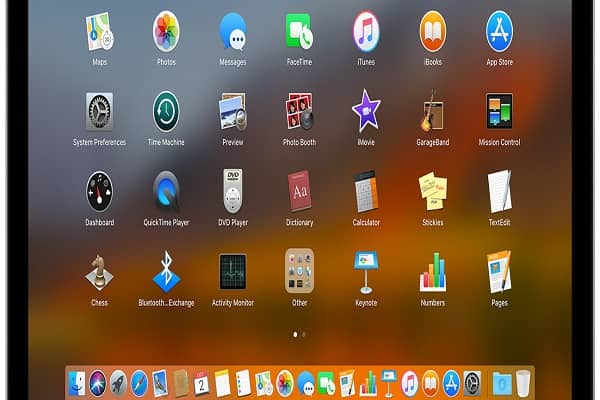Are you looking to install Anaconda in favor of something better?
In a world of constant upgrades and technological advances, we can’t neglect the growth of AI and machine learning. Many industries now require machines that allow for big data analysis. Because of that, programming languages like Anaconda are a must-have.
Anaconda is one of the most powerful and popular distributions of programming languages. It offers everything a Mac or Windows user may need in data analysis and processing.
But, if you want to uninstall Anaconda for whatever reason, there are many ways to do it. Here’s a guide to uninstalling Anaconda from your device.
What Is Anaconda?
Anaconda is a free, open-source code for programming languages like R and Python. It’s a distributor that can provide you with everything you need in making big data analyses. It can also help you in data processing and machine learning.
This coding tool can connect many binary system sets in one structure. Some of these systems are the statistical analysis package and numerical calculations package. Aside from that, Anaconda also has Pandas for integrating and transforming data.
However, because it’s such a powerful app, it can take up a lot of space and memory. The app may also conflict with another program on your computer. During these instances, it’s best that you uninstall Anaconda, especially if you don’t use it on a regular basis.
How to Uninstall Anaconda
The thing about Anaconda is that while it’s easy to install, it can be quite complicated to take out. There are a lot of ways on how to uninstall Anaconda on your Mac computer. You can use specialized software, app cleaners, or even a manual uninstallation process.
Whatever method you opt to use to uninstall Anaconda, it’s necessary for you to get to delete everything. Anaconda is an example of an IDE installation. This means that there will be package tools that will remain after you remove the app.
Here are some ways you can uninstall Anaconda and everything related to it on your computer.
MacKeeper
The fastest way to get rid of Anaconda on a Mac device is to use MacKeeper. This specialized software helps you avoid having to track down every folder and file. With MacKeeper, it will delete everything, even the app’s leftovers.
To uninstall Anaconda using MacKeeper, you only need to follow these steps. Start by installing MacKeeper on your app and running it. After that, check on the left menu and go to the Smart Uninstaller.
Click on Scan and go to Applications. When you’re there, check on Anaconda and click on Remove Selected.
After that, MacKeeper will begin the uninstallation process. This app will clear out everything you need to take out.
Terminal
The thing about uninstalling Anaconda and clearing out its files with a manual search is its efficiency. Unlike some apps, Anaconda-related files can be all over your hard drive instead of in one place. Because of that, it’s time-consuming and will not guarantee a complete file clearing.
That’s why uninstalling Anaconda through specialized software and other apps are better.
You may also opt to uninstall Anaconda with Terminal instead. This Apple utility allows you to control your Mac device by using a command line. With Terminal, you can apply sets of commands to delete Anaconda.
Open your Applications and navigate to Utilities to launch the Terminal app. To begin deleting the whole set of Anaconda files, copy and paste this command, rm -rf ~/anaconda. After you pasted it, you can now begin to delete anaconda packages using the Terminal command.
In deleting Anaconda prompt package, open the Terminal and put in these commands.
To uninstall a SciPy package, type in conda remove -n myenv scipy if it’s in the myenv environment. When it’s in the current environment, type in ‘conda remove scipy.’
In some cases, you may also need to uninstall Miniconda from your Mac.
Miniconda is Anaconda’s smaller version, and you can delete it using Terminal.
After launching Terminal, type in the command, rm -rf ~/miniconda. For a complete uninstallation of the app from your PATH environment, edit, edit ~./bash_profile.
Then type in rm -rf ~/.condarc ~/.conda ~/.conrinuum to remove its hidden files from the home directory.
Also read: Updated Wiseplay Lists for your Android Mobile
Manual Delete
If you plan to uninstall Anaconda and delete the files yourself, here are the steps you need to follow. You may also follow these steps as a thorough sweep to ensure you’ve deleted Anaconda.
Start by quitting the Anaconda app in your Mac’s Dock. Go to Utilities and find your Activity Monitor. Select all the processes relating to Anaconda and click on the cross at the top left corner of your device to quit them.
After you’ve done that, go to the Applications folder and fTrashhe Anaconda icon to move it to the Trash. Next, move the Anaconda app fromTrashapplication folder to the Trash, goTrashhe MacBook location.
Go to Macintosh HD, check on the library, and find Receipts. Locate these Anaconda-relaTrashiles and move them to the Trash.
~/Library/Receipts/io.continuum.pkg.anaconda-client.bom
~/Library/Receipts/io.continuum.pkg.anaconda-client.plist
~/Library/Receipts/io.continuum.pkg.anaconda-navigator.bom
~/Library/Receipts/io.continuum.pkg.anaconda-navigator.plist
~/Library/Receipts/io.continuum.pkg.anaconda-project.bom
~/Library/Receipts/io.continuum.pkg.anaconda-project.plist
~/Library/Receipts/io.continuum.pkg.anaconda.bom
~/Library/Receipts/io.continuum.pkg.anaconda.plist
Once you’ve completed these steps, your Mac device is now free from any residual traces from Anaconda.
An Easy Guide on How to Uninstall Anaconda on Your Mac
Anaconda is one of the easiest coding apps you can install on your Mac computer, but getting rid of it is a different story. It leaves a lot of traces, and even after uninstalling, it still takes up a big amount of space. Here are some of our tips to help you uninstall Anaconda for good.
Are you looking for similar apps to Anaconda? Check out our other blog posts to find the best programming and coding apps today.





